- Author Arianna Cook [email protected].
- Public 2023-12-17 14:23.
- Last modified 2025-06-01 07:38.
In the material, we will talk about downy mildew, gray rot, anthracnose, paralysis of the ridges and other diseases of grapes. Find out how to prevent and treat them. Protection of the vine from ailments consists in the application of a system of chemical and agrotechnical measures. Diseases of grapes are divided into infectious and non-infectious. Group 1 includes those that are capable of causing more harm, since spores of harmful bacteria and fungi infect the still healthy parts of plants. These are: mildew or downy mildew, anthracnose, powdery mildew, white and gray rot, paralysis (drying out) of ridges, bacteriosis, spotted necrosis.
Disease # 1: Downy mildew
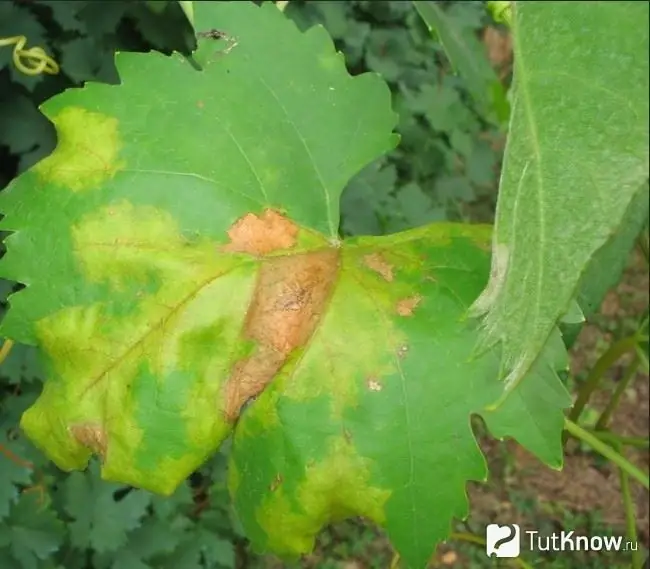
It is called mildew in another way. This is one of the most common and dangerous diseases of grapes. Powdery mildew affects many other plants as well. The spread of mildew is facilitated by the appearance of cold early morning dews, frequent rains, an air temperature of + 20- + 25 ° С. If you notice the appearance of powdery mildew as soon as possible, then the treatment will be successful. To do this, you need to periodically inspect the grapes. If you see a rounded oily spot on the leaf, this should alert you. If the weather is wet, a powdery white coating will appear on the underside of the leaf, where the stain is. This means that the plant is really affected by powdery mildew.
Unless urgent action is taken, the affected tissue will begin to turn yellow and then dry out. The disease often spreads to the bunch of grapes. Here it appears as bright green spots. As a result, sap flow is disrupted, due to which the flowers or berries dry up and crumble.
For prevention, it is necessary to cut off the grape bush in a timely manner, tie up the growing vines. In the fall, all fallen leaves must be raked, collected and burned, and the soil must be dug under the bush. It will help prevent powdery mildew by not thickening the branches (pruning unnecessary ones), as a result of which there will be better ventilation and illumination of the vine.
For the treatment of powdery mildew, "Acrobat MC" has proven itself well. Application: in 5 liters of water, you need to dissolve 20 g of drugs, this solution is enough to process an area of 100 square meters. m. First, use "Acrobat MC" for the prevention of downy mildew, if it does appear, then you need to repeat the treatments every two weeks. Last time - a month before picking berries.
There are other chemicals available to combat mildew. These are copper-containing ones: "Aksikhom", "Hom", "Polykhom", "Kurzat". "Copper oxychloride", a 0.3% water-based solution is prepared from it. Good effect on the eradication of the disease and proven over a long time "Bordeaux mixture".
Illness # 2: Powdery Mildew
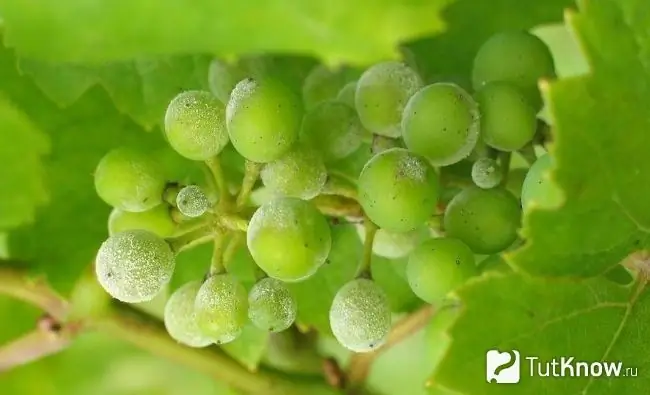
Powdery mildew or powdery mildew can also cause great harm to the plant. If you notice that some grape shoots are lagging behind in growth, their leaves have become curly and covered with white-gray dust, then powdery mildew has struck the bush. Over time, even the tops of the shoots and bunches of grapes look like they are sprinkled with flour or ash. This causes the berries to burst or dry out. Powdery mildew fungus appears where there is poor ventilation of the vine, in damp but moderately warm weather.
For the prevention of powdery mildew, copper-containing preparations are used. This is a 1% solution of Bordeaux liquid, which can be sprayed 2 times a month. But after the final time, it is necessary to stop treatment with the drug at least 3 weeks before harvesting.
"Zircon M" is less harmful to people; berries sprayed with it can be eaten within a week after processing. For the prevention and treatment of downy mildew, the natural preparation Fitosporin M will help. To prepare a solution, you need to dilute 2-3 tsp in 10 liters of water. paste "Fitosporin M" or 20 grams of powder and spray the first time the vine after bud break, and then repeat the treatment 2 times a month. You can treat the plant with colloidal sulfur, Bordeaux mixture, as well as with Quadris, which, in addition to this, will help with other grape diseases.
Disease # 3: Black Spot
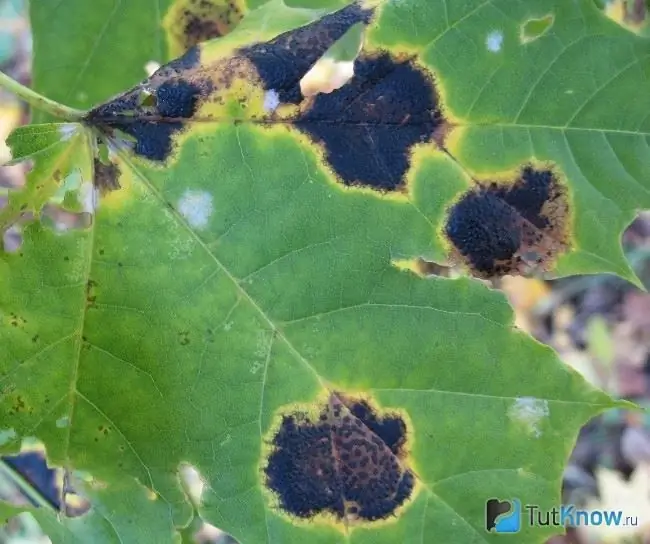
It is also called escoriasis, phomopsis, the withering away of shoots. The disease can affect not only the lignified, but also the green parts of the plant. Increased air humidity contributes to the spread of escoriasis. It is easy to recognize this grape disease. On the shoots, it manifests itself in the form of discoloration of the bark, on the leaves and berries - in the form of spots. If the air temperature is above + 10 ° C, then numerous black dots form on the affected areas, this is the introduction of parasitic fungi. Because of this, the affected areas crack. Mushrooms sometimes cause damage to leaves, less often to ridges, clusters and antennae. If the fungus has penetrated ripe berries, they turn dark purple.
The vine is often infected with this disease due to mechanical damage. For example, spores of a fungus can penetrate through wounds inflicted on branches due to debris from shoots. The fight against black spot is complicated by the fact that the mycelium of the fungus penetrates deep into the wood, so it is impossible to completely get rid of the disease. Control measures are aimed at halting its development. This will help drugs: "Bordeaux mixture", "Antracol", "Cuproxat", "Strobi", "Ridomil", "Thanos", "Copper oxychloride", "Horus". They are sprayed on the vine after autumn leaf fall or after pruning. Spring processing time coincides with the unfolding of the third sheet. To protect the young one-year growth, the plant is further processed at the same time as against downy mildew and powdery mildew.
Disease # 4: Gray Rot
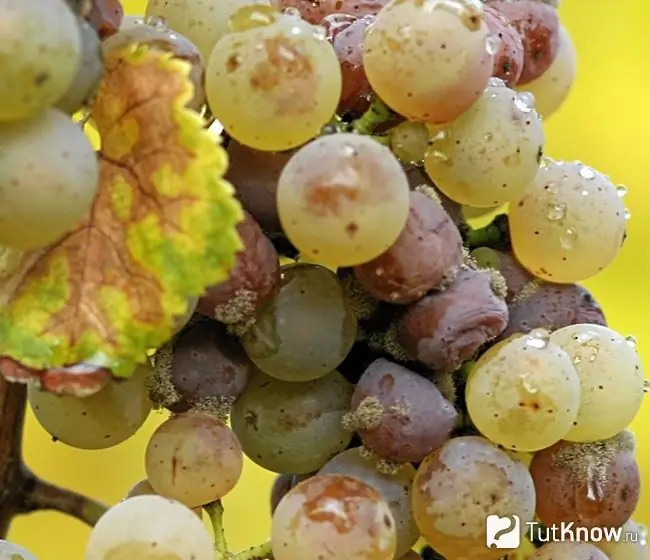
It affects annual wood, green parts of the bush, as well as the grafting site. The disease manifests itself in the spring, when the weather is damp, cold. The fungus covers open buds with a gray coating, as well as young shoots, especially where the plantings are poorly ventilated.
If dry weather is established, the development of the disease is suspended. In order to prevent the occurrence of gray rot, it is necessary to moderately feed the plant with nitrogen, and in the event of a disease, apply the same control methods as with mildew and mildew.
Disease # 5: White Rot
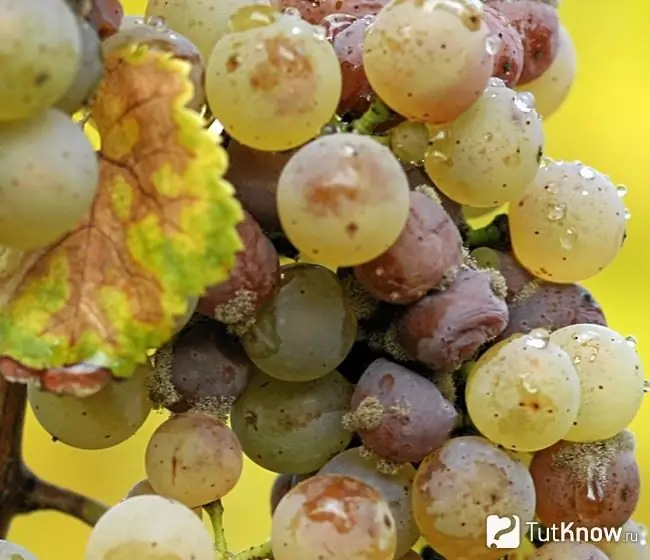
It is a fungal disease that occurs on berries damaged by hail or sunburn. The period of distribution of white rot is from mid-June to early September, at temperatures from +18 to + 30 ° C and at high humidity. The disease progresses with lightning speed, the grapes darken, become as if scalded in just a few hours. The control measures for this disease are the same as for mildew.
Disease # 6: Paralysis (drying out) of the ridges

This is a relatively new disease of grapes. Although it has been known for 80 years, it has recently become a threat to modern viticulture. It is expressed in metabolic disorders of the bunches, does not belong to infectious diseases, therefore it is not transmitted to other parts of the plant. It occurs due to improper nutritional physiology, which leads to a violation of the water balance of the bunch crest.
To combat paralysis of the ridges, they are treated with magnesium chloride, calcium chloride at a concentration of 0.75%. The first time you need to process it for preventive purposes, then repeat the spraying three times a month.
Disease # 7: Bacteriosis
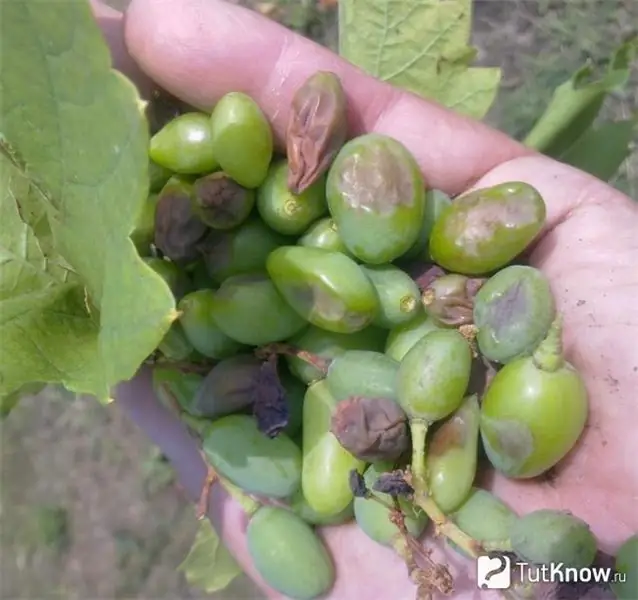
It belongs to the infectious diseases of grapes and is caused by pathogenic bacteria. Bacteriosis can affect individual parts of the plant or all of it. Bacteria enter through wounds, but sometimes through insect vectors. Bacteriosis has several varieties, including bacterial cancer. To combat this disease, it is recommended to grow resistant grape varieties and carry out sanitary and quarantine measures.
Illness # 8: Spotted necrosis
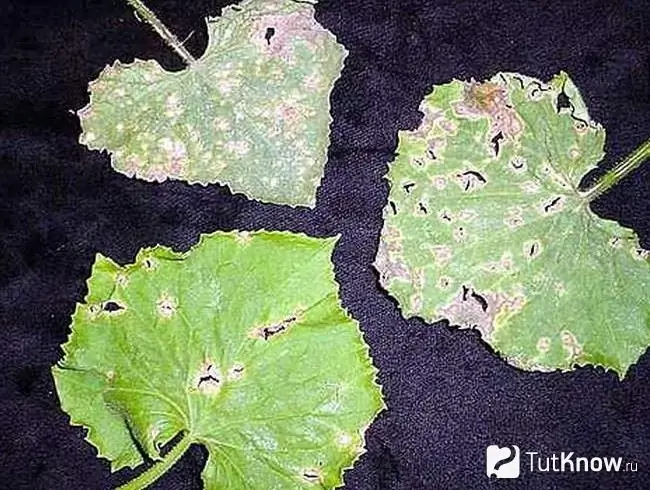
Correct pruning will help against this fungal disease, which facilitates airing the vine, collecting fallen leaves, deep autumn digging of the earth around the bush. High-standard methods of plant formation, treatment of planted seedlings with iron sulfate at a concentration of 4% will also help prevent the appearance and development of spotted necrosis.
Disease # 9: Anthracnose
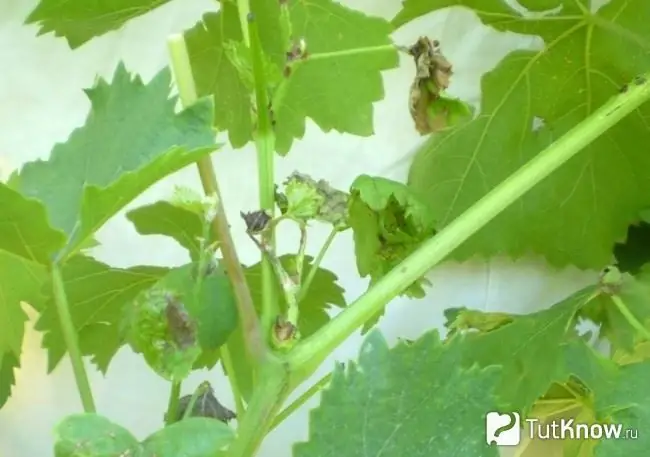
It affects most of the plant: shoots, leaves, inflorescences, berries. If the spring is wet, then there is a greater chance of this grape disease occurring. It manifests itself in the form of brown spots, which gradually merge. The affected areas die off, deep wounds appear here, which is why the runs dry out.
Prevention of this disease begins in the spring. Before flowering, the vine is sprayed with Bordeaux liquid with a concentration of 1%, copper oxychloride. After half a month, if necessary, the processing is repeated. You can make a solution of red potassium permanganate and wash the leaves of the plant with it. Timely feeding will help the grapes to be stronger and resist this and other diseases.
Find out more information about the most common grape diseases and methods of their treatment in this video:
[media =






